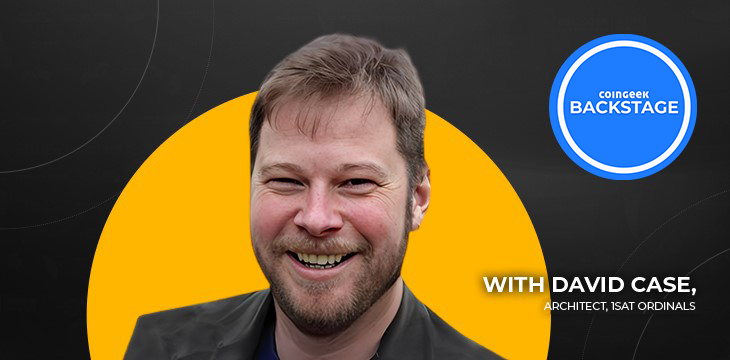|
Getting your Trinity Audio player ready...
|
Ordinals launched on the BSV blockchain last year at block height 783968, and since then, 1Satoshi Ordinals has led the way as the token protocol of choice for many. The 1Sat Ordinals architect David Case spoke to CoinGeek Backstage on the sidelines of the BSV DevCon about what makes Ordinals unique, the integration with sCrypt and more.
“We’re just doing cool things on top of Bitcoin,” Case told CoinGeek’s Jon Southurst in London.
Ordinals first came up on BTC in January 2023. Case was among the first to bring Ordinals to the massively scaling BSV, where real-time transactions and negligible fees have fanned their quick rise to the top. While BSV Ordinals require a single satoshi in the transaction output, BTC Ordinals need over 500 satoshis due to the much higher network costs.
“BSV is so much more equipped to handle it,” says Case. “The idea of tracking one satoshi from one transaction to another…we can just do it, and they can’t. They have to put all sorts of complexities.”
Ordinals on BSV have resulted in diverse applications. Case highlighted POW-20 as one of his favorite use cases. Under this standard, the tokens are distributed via proof of work (PoW) for solving a hash puzzle.
Essentially, “the whole token supply gets locked up in a contract, and the contract owns the token. If you comply with the contract, it just spits out tokens to you.” A thousand years from now, if there are some tokens left in the contract, anyone can fire up a POW-20 miner and get these tokens.
1Sat Ordinals has developed a close working relationship with sCrypt—at the sCrypt Hackathon earlier this year, the two launched the sCrypt Ordinals SDK.
“Neither of them gets in each other’s way,” says Case, who was formerly the CTO at CryptoFights maker FYX Gaming.
1Sat Ordinals represents the tokens, while sCrypt defines the token’s logic, he explained.
Ordinals have unearthed a greater sense of a shared goal in warring blockchain factions, Case believes.
“[There isn’t] a lot of the old animosity and hard divisions between chains…most people in this group are newer and don’t have that history. And then there are a lot of people who want BSV to succeed for what it can enable in this space and don’t have hope that BTC can do that.”
Watch: BSV DevCon 2024: Building real-world solutions for real-world problems

 01-08-2026
01-08-2026 




